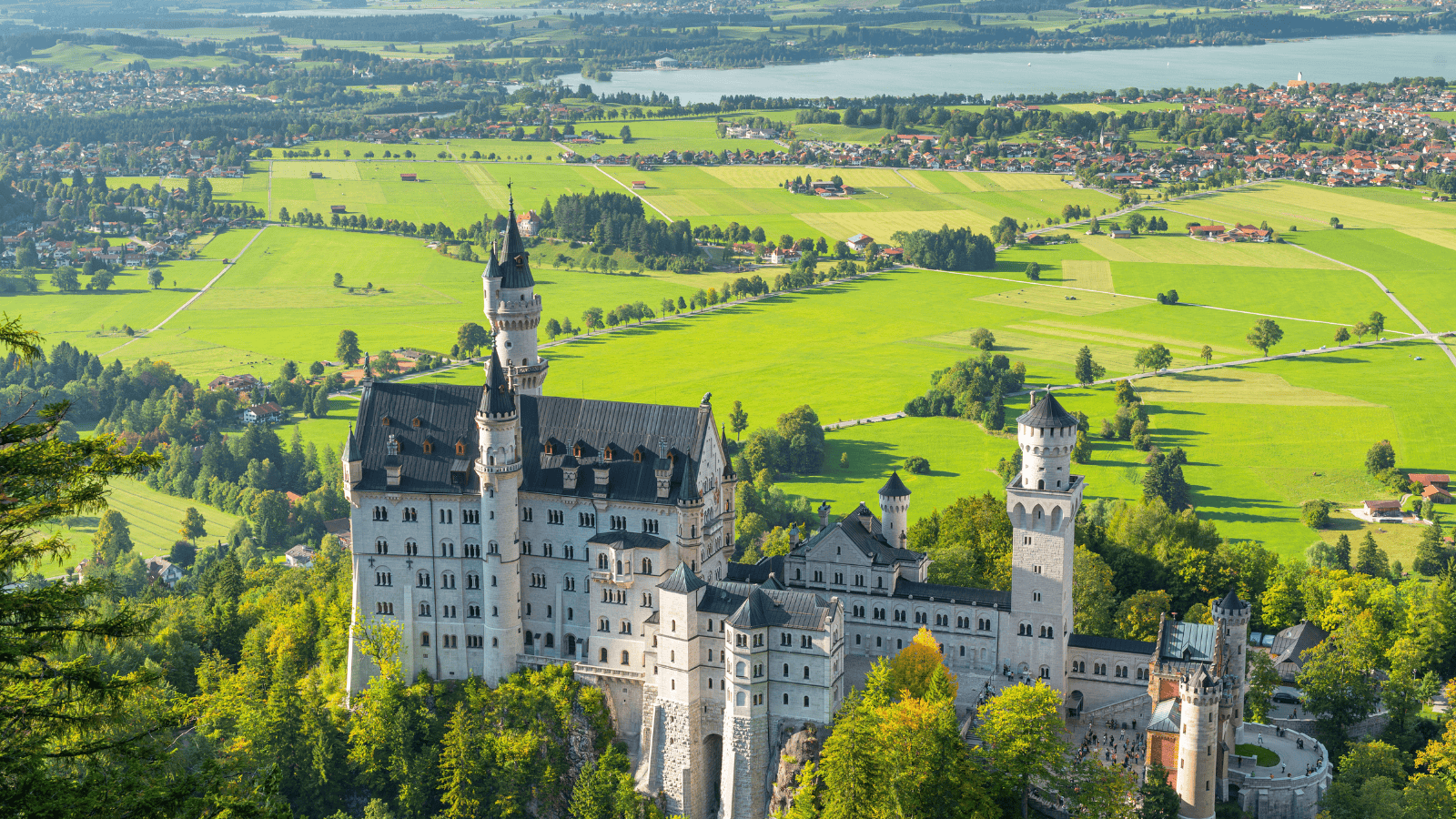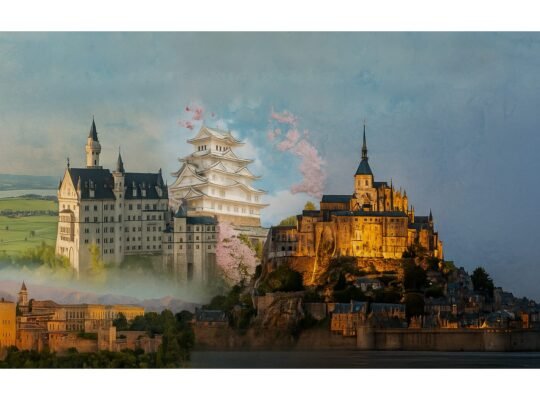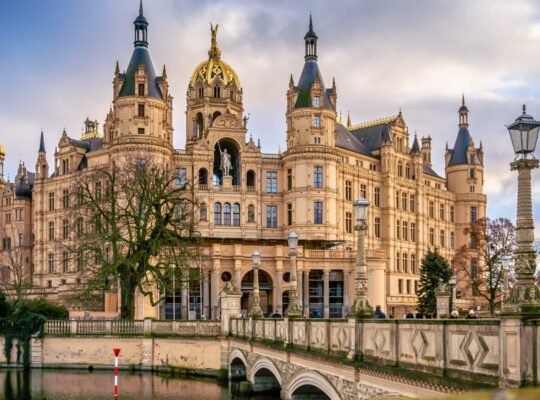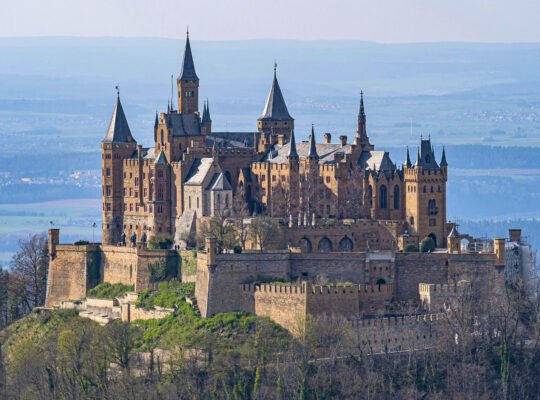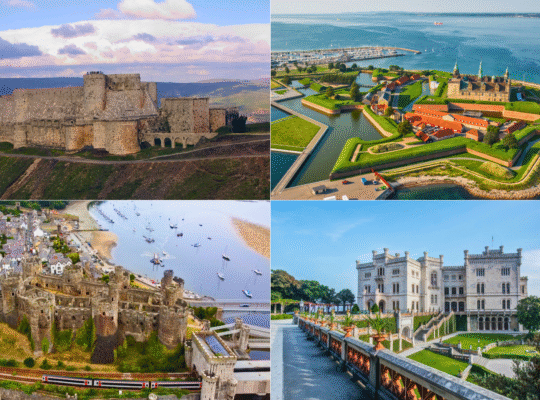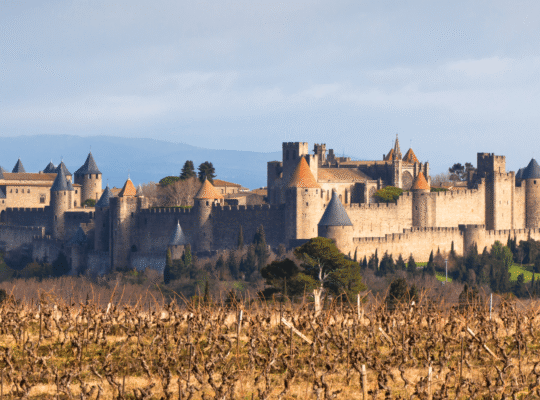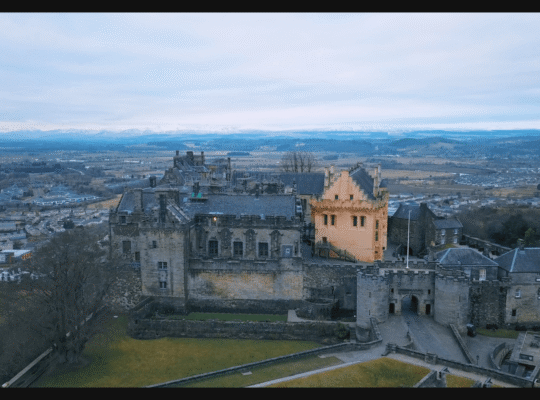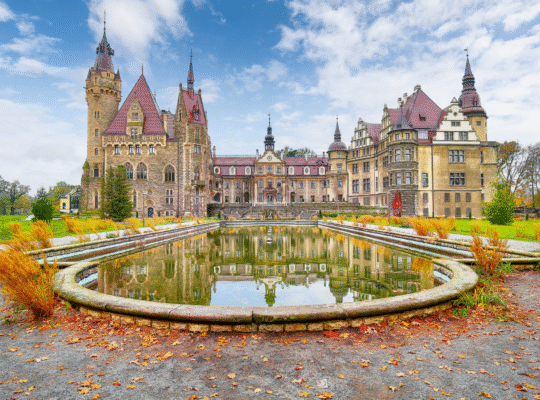The first time I spotted Neuschwanstein Castle, I wasn’t standing at a famous lookout or scrolling Instagram. I was behind the wheel, somewhere near Füssen, windows cracked, music low, when it appeared above the trees like a mirage. I actually muttered, “Whoa,” out loud and pulled over without thinking. That first glimpse? I’ll never forget it.
I’ve always been fascinated by castles. Maybe it started with history class or maybe with movies, but the idea of walking through places built centuries ago—places where real people lived, ruled, or dreamed—it’s never stopped thrilling me. Bavaria turned out to be everything I’d hoped for. Not polished. Not perfect. But full of stories, details, and surprises.
This isn’t a checklist kind of trip. It’s a slow drive through mountain valleys, lakeside towns, and winding backroads—where each castle feels different from the last. Some are massive and majestic. Others are half-hidden on forested hills. But all of them leave you with that same sense of wonder.
Ready? Embark on this ultimate 7-day Bavaria castle road trip through Germany's fairytale region.

📍 Quick Facts: Your Bavarian Castle Road Trip at a Glance
🚗 Route Start: Munich
🗓️ Duration: 7 Days
🏰 Castles Visited: Neuschwanstein, Hohenschwangau, Linderhof, Hohenaschau, Herrenchiemsee, Burghausen, Trausnitz, Nuremberg, Würzburg Residence, Fortress Marienberg
📷 Best For: Fairytale vibes, history lovers, road trip romantics
🌄 Best Time to Go: Late spring to early fall (May–October)
🇩🇪 Region: Bavaria, Southern Germany

🗓️ Day-by-Day Itinerary: A Journey Through Stone and Story
Day 1: Munich to Hohenschwangau & Neuschwanstein – Fairytales Begin Here
Your journey begins in Munich, but it won’t be long before city streets give way to rolling green hills, alpine lakes, and villages that seem untouched by time. As you drive southwest toward Hohenschwangau, keep an eye on the treetops—you might just catch your first glimpse of Neuschwanstein’s towers peeking through the forest. That moment? It sticks.
Before diving into the iconic sights, make time to explore Hohenschwangau Castle. Often overshadowed by its famous neighbor, this was King Ludwig II’s childhood home. Inside, you’ll find ornate rooms, painted ceilings, and quiet corners that reveal a more personal side of Bavarian royalty. It’s an ideal way to ease into the world Ludwig was raised in—before he set out to build castles of dreams.
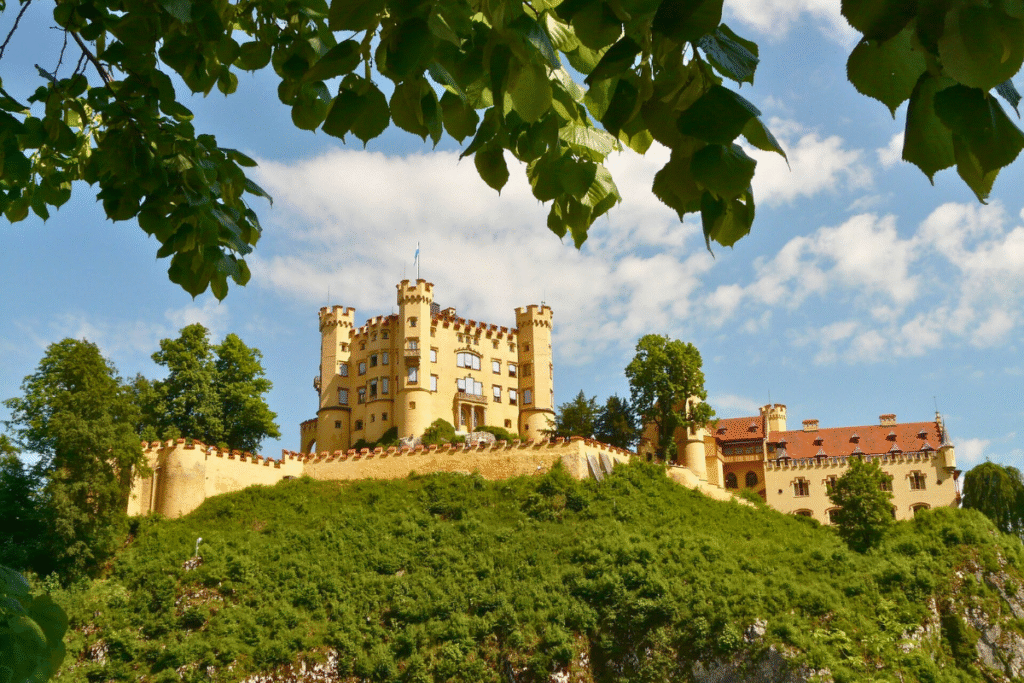
From there, it’s time for the main event: Neuschwanstein Castle. You can take the shuttle, hop in a horse-drawn carriage, or hike uphill (about 30–40 minutes) through shaded woodland trails. However you get there, nothing prepares you for the first full view of it—perched dramatically on a cliff, backed by mountains, and fronted by a deep valley.
Once inside, expect opulence with a touch of fantasy. Think swan motifs, murals inspired by Wagner’s operas, and a throne room designed to impress—though it was never finished. Neuschwanstein wasn’t meant to be practical. It was meant to be otherworldly. That’s part of what makes it unforgettable.
🎫 Tip: Book your tickets in advance online and aim for a morning slot to avoid crowds. Tours are timed and fill up quickly, especially in summer.
For a deeper dive into the story behind Ludwig’s mountaintop masterpiece, don’t miss our full guide to Neuschwanstein Castle.
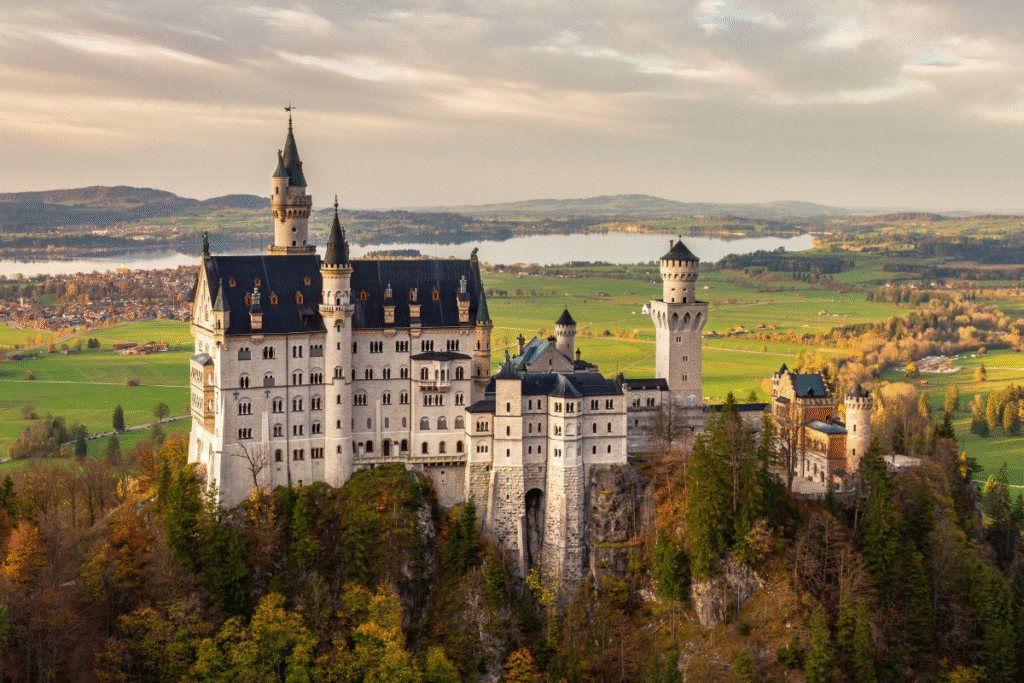
After your visit, don’t skip the short walk to Marienbrücke (Mary’s Bridge). This is the classic postcard view—and while the bridge isn’t for the faint of heart, the photo and the panorama are worth it.
End your day in Füssen, a charming town just a short drive away. You’ll find cobbled streets, cozy inns, and plenty of spots to grab a hearty Bavarian dinner. It’s the perfect place to rest after a day spent wandering through royal legends.
⏳ Travel Time: ~2 hours driving from Munich
🍽️ Tip: Try the käsespätzle (cheesy Bavarian noodles) at a nearby alpine tavern.
Day 2: Linderhof Palace & Ettal Abbey – Where Grandeur Meets Solitude
Today’s drive takes you deeper into the Bavarian Alps. Wind your way through forested valleys and small villages until you reach Linderhof Palace—the only castle King Ludwig II lived to see completed. It’s not as famous as Neuschwanstein, but in many ways, it’s more revealing.
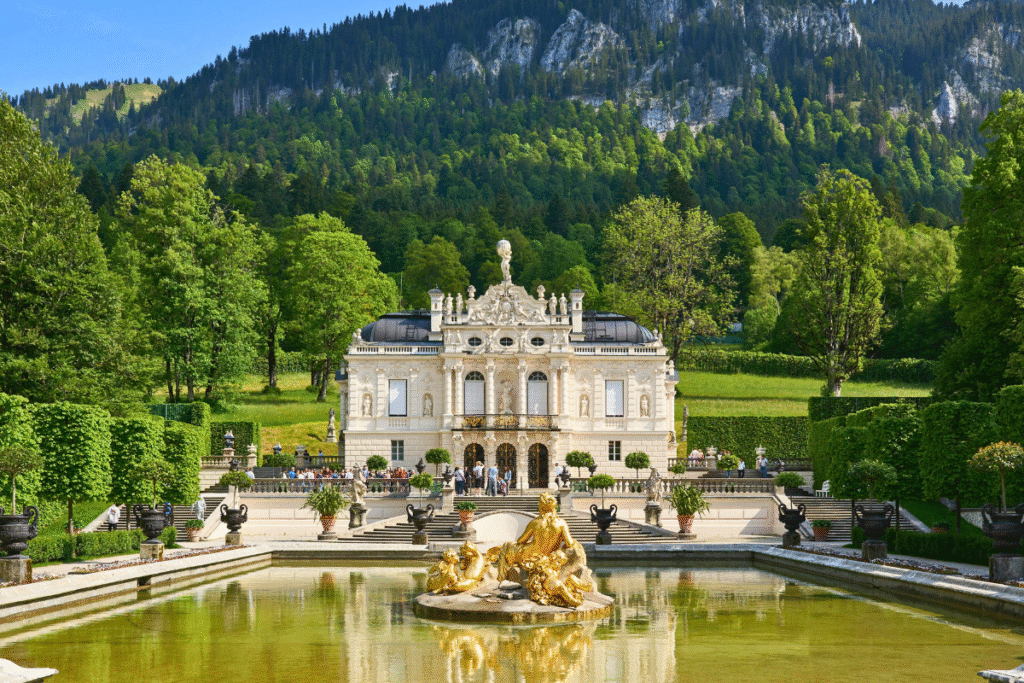
Linderhof is all about detail. Inspired by Versailles but on a much smaller scale, it’s a jewel box of a palace tucked into a quiet mountain setting. The interiors are lavish: mirrors everywhere, silk-covered walls, golden accents, and rooms designed for a king who preferred solitude. Ludwig was a recluse in his later years, and Linderhof reflects that—it feels like a personal escape, not a public showpiece.
Outside, the gardens are just as elaborate. You’ll find cascading fountains, sculpted terraces, and even a Moorish kiosk and artificial grotto—yes, a man-made cave with a lake and a stage where Wagner’s music once echoed.
🎫 Tip: Guided tours run frequently and are included in your entry ticket. No need to book in advance unless you're visiting during peak season.
On your way back, make a short detour to Ettal Abbey, just 15 minutes away. This working Benedictine monastery dates back to the 14th century and is still home to monks today. The baroque church is breathtaking—step inside and look up at the dome fresco. The abbey also produces its own beer, liqueurs, and cheese, which you can sample or take with you.
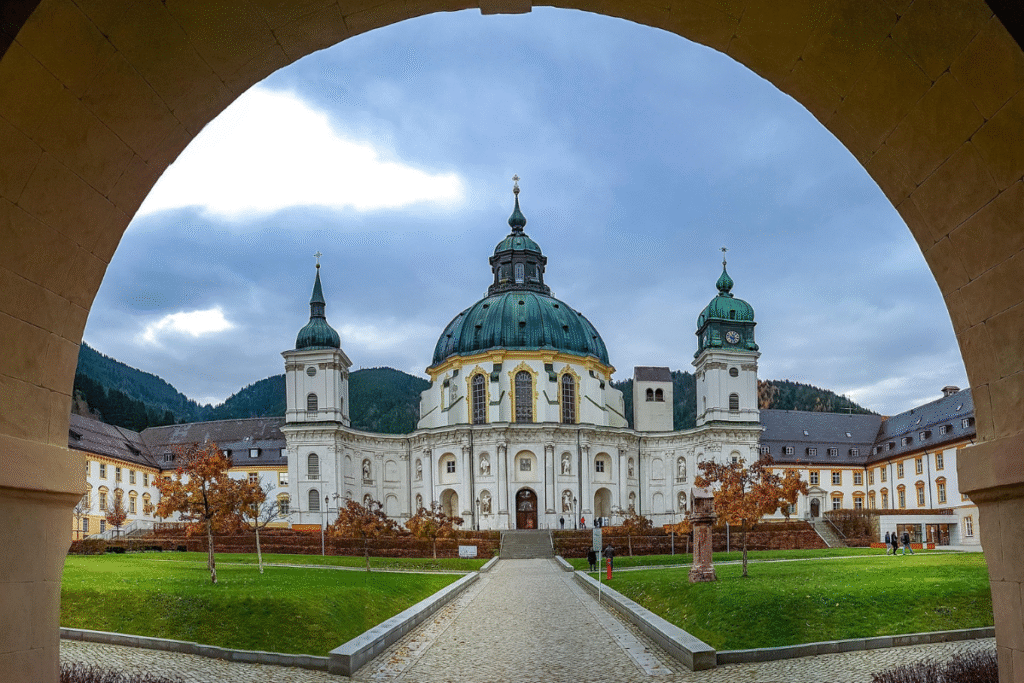
From here, you can either loop back toward your Füssen base or stay overnight in nearby Oberammergau—a picturesque town famous for its Passion Play and woodcarving traditions. Whichever you choose, day two is a blend of splendor and stillness that lingers long after you’ve left.
⏳ Travel Time: ~1.5 hours from Füssen to Linderhof (via scenic Alpine roads)
🍽️ Tip: Enjoy a hearty Bavarian meal at a Gasthof with views of the Zugspitze.
Day 3: Schloss Hohenaschau & Herrenchiemsee – Castles Between Forest and Lake
After breakfast, head northeast toward Schloss Hohenaschau, a lesser-known gem tucked away in the Chiemgau Alps. The drive takes you through peaceful countryside and past grazing cows and timber-framed farms—the kind of route where even the road feels part of the story.
When you arrive, you’ll notice that Hohenaschau Castle doesn’t shout for attention. It sits quietly on a hillside, its white walls and medieval tower framed by green slopes and thick forest. You can join a guided tour (usually in German, but printed English summaries are often available) that walks you through its halls, including rooms once used by noble families, knights, and even a secretive order of monks. The castle’s setting feels more intimate than grand, which makes it all the more charming.
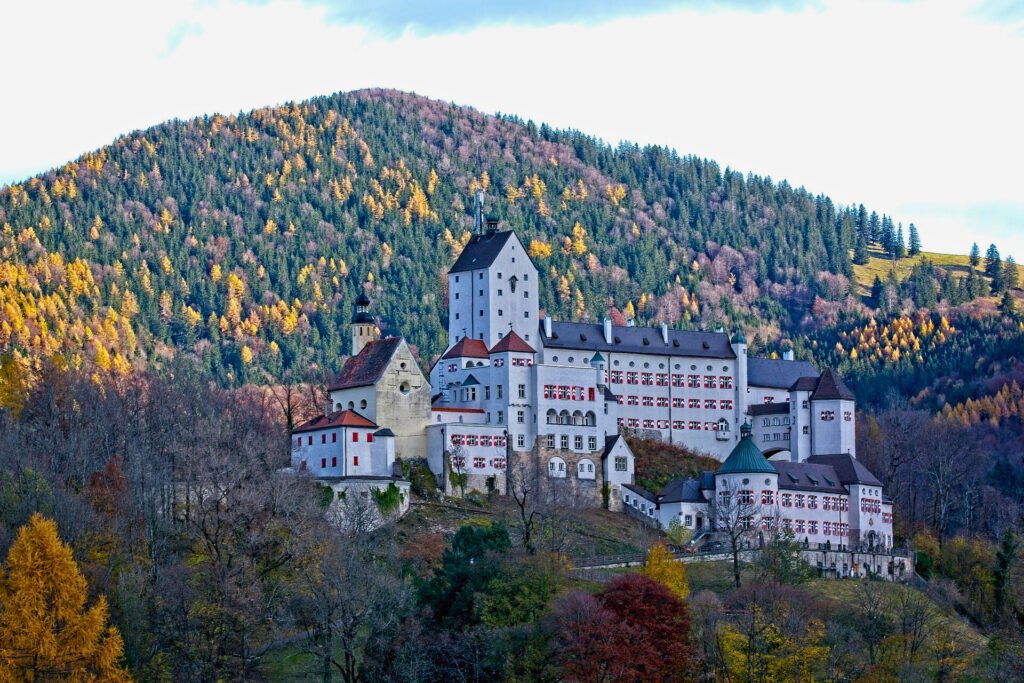
From here, continue east toward Lake Chiemsee, often called the “Bavarian Sea.” Park near the town of Prien and catch a boat to Herreninsel (Men’s Island), where King Ludwig II’s most extravagant project awaits: Herrenchiemsee Palace.
Herrenchiemsee was Ludwig’s tribute to Versailles—and it shows. Walking through the Hall of Mirrors, with chandeliers glittering and gold leaf gleaming, it’s hard to believe this palace was never fully completed. Only a fraction of what was planned ever came to life, but what exists is breathtaking. The scale, the symmetry, the sheer opulence—it’s Ludwig’s vision at its most ambitious.
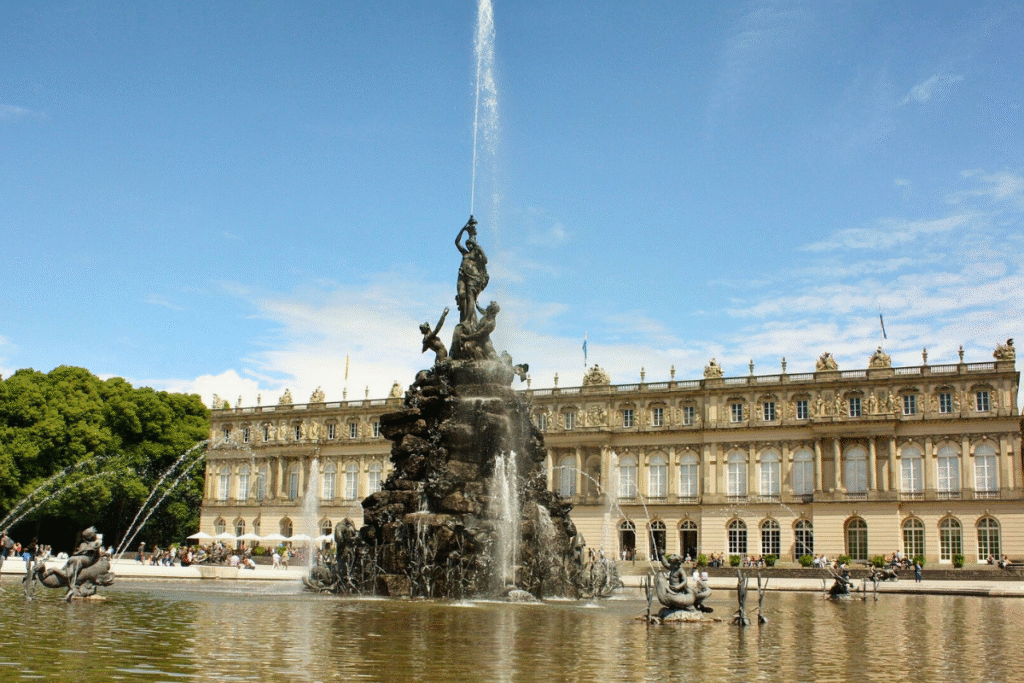
🛥️ Tip: Boat rides to Herreninsel depart regularly, but check the schedule before you go. Entry to the palace is only possible with a guided tour, which you can book at the ticket center once you arrive on the island.
Before you head back to the mainland, consider a short walk through the island forest or visit the nearby Augustinian Monastery, which houses a museum and a peaceful beer garden.
Wrap up the day in Prien am Chiemsee or nearby Bernau, both of which offer cozy guesthouses and lakefront views—perfect for unwinding after a day of alpine castles and island palaces.
⏳ Travel Time: ~1 hour to Hohenaschau, then 30 minutes to Prien am Chiemsee
🚤 Ferry: ~15 minutes each way to Herreninsel
🍽️ Tip: Try fresh-caught fish at a lakeside biergarten before sunset.
Day 4: Burghausen Castle – Walking the Longest Castle on Earth
Today’s route veers east toward the border with Austria, where you’ll find a castle that couldn’t be more different from the ornate palaces you’ve seen so far. Burghausen Castle isn’t delicate or dreamy—it’s a fortress. A mighty one. In fact, it holds the record as the longest castle complex in the world, stretching over 1,000 meters along a narrow ridge above the Salzach River.
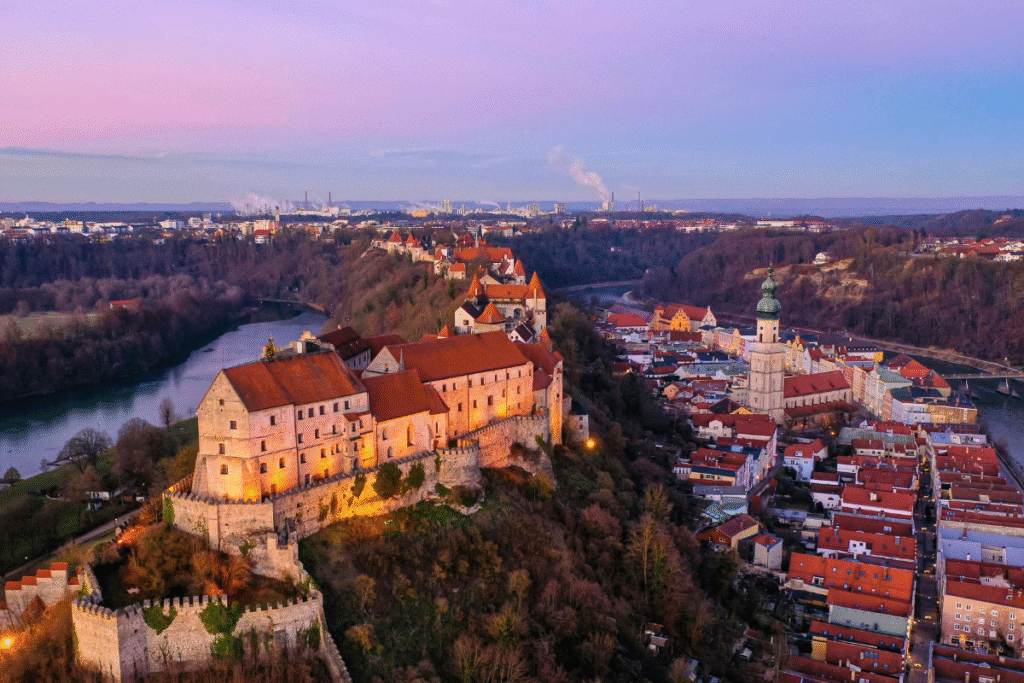
The approach alone is impressive. As you walk across the first bridge and enter the first gate, it hits you just how massive this place is. Instead of one big structure, Burghausen unfolds in sections—courtyards, towers, ramparts, chapels, and walls that seem to go on forever. It was built to withstand sieges, and walking its length feels like stepping back into the world of knights, guards, and battlements.
Give yourself time to explore. There are small museums, hidden viewpoints, and quiet spots where you can stop and take it all in. Don’t miss the Palas, the main residential building, which now houses a branch of the Bavarian State Gallery with medieval and Renaissance art.
🌉 Tip: The views from the upper walls are some of the best of the trip. On a clear day, you can see deep into Austria on one side and across the old town of Burghausen on the other. If you’re into photography, this is your moment.
When you’re ready for a break, walk down into the old town below the castle. It’s colorful, relaxed, and full of cafes and restaurants. Grab a late lunch or early dinner here, or even better—stay overnight. Sleeping in a town with a 1,000-year-old castle towering above you has a certain magic to it.
⏳ Travel Time: ~1.5 hours from Chiemsee area
🍽️ Tip: Dine in the castle tavern if open, or explore the charming riverside cafés in town.
Day 5: Landshut and Trausnitz Castle – Medieval Bavaria in Full Color
Today, it’s time to turn back toward central Bavaria as you head to the town of Landshut, one of the region’s most underrated stops. While it may not be as famous as other destinations on your itinerary, Landshut feels like stepping into a living painting—pastel buildings, red-tiled roofs, and a skyline dominated by the spire of St. Martin’s Church, the tallest brick tower in the world.
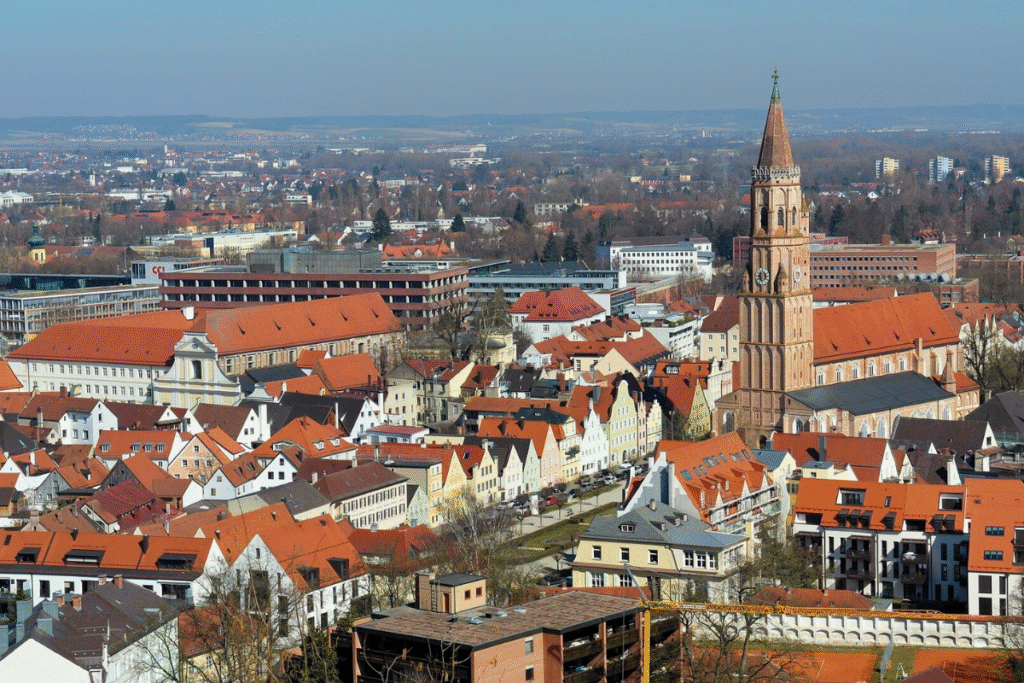
Up above the town, perched on a hill, stands Trausnitz Castle. Built in the 13th century, this fortress once served as a seat of power for the Wittelsbach family. What makes Trausnitz special is how much of its medieval character remains intact. Inside, you’ll find armories, tapestries, Gothic halls, and frescoes that give real weight to the history of the place. If you’ve been craving something a little more raw and grounded after the dreaminess of Neuschwanstein or Linderhof, this is it.
🛡️ Tip: The views from the castle courtyard are some of the best in Landshut—especially in the late afternoon when the sunlight hits the rooftops just right. Don’t rush. Wander. Let it soak in.
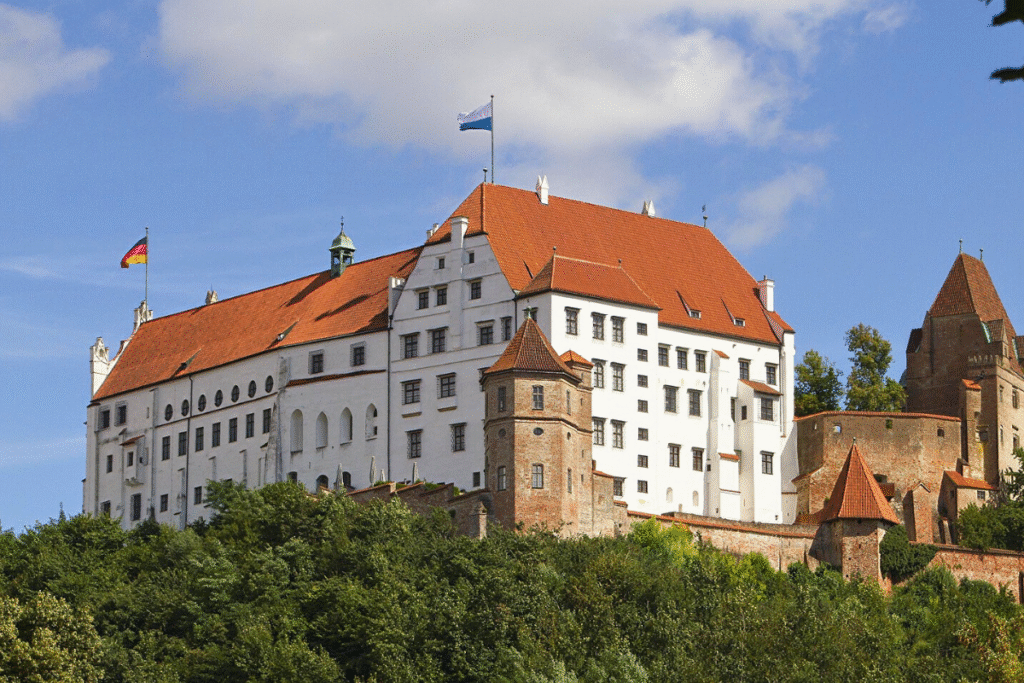
Back in town, take time to walk along the Isar River, grab coffee on Altstadt Street, or browse the local boutiques. If your trip lines up with the Landshuter Hochzeit (held every four years), you’re in for a full medieval reenactment festival that transforms the entire city into the 15th century.
Whether you stay the night in Landshut or continue a bit north toward Nuremberg for a head start on Day 6, today is all about savoring the quieter moments and the authenticity that Bavaria does so well when you slow down enough to notice.
⏳ Travel Time: ~1.5 hours from Burghausen
🍽️ Tip: Grab dinner at a traditional Gasthaus and try roast pork with dark beer gravy—Bavarian comfort food at its best.
Day 6: Nuremberg Castle & Old Town – Echoes of Empire and Rebirth
Nuremberg doesn’t reveal itself all at once. It unfolds in layers—as you cross its stone bridges, pass under ancient gates, and climb toward the castle that crowns the city’s historic heart. What you’ll find isn’t just one story, but many: medieval opulence, wartime scars, and a modern city that’s rebuilt itself without forgetting where it’s been.
Start at the top—literally. Nuremberg Castle rises from a sandstone ridge, its towers and ramparts overlooking the tiled rooftops like a watchful sentinel. The short walk up winds through quiet alleys and flower-boxed courtyards, and then suddenly you’re there, standing where emperors once stood, looking out over a city that shaped (and was shaped by) centuries of European history.
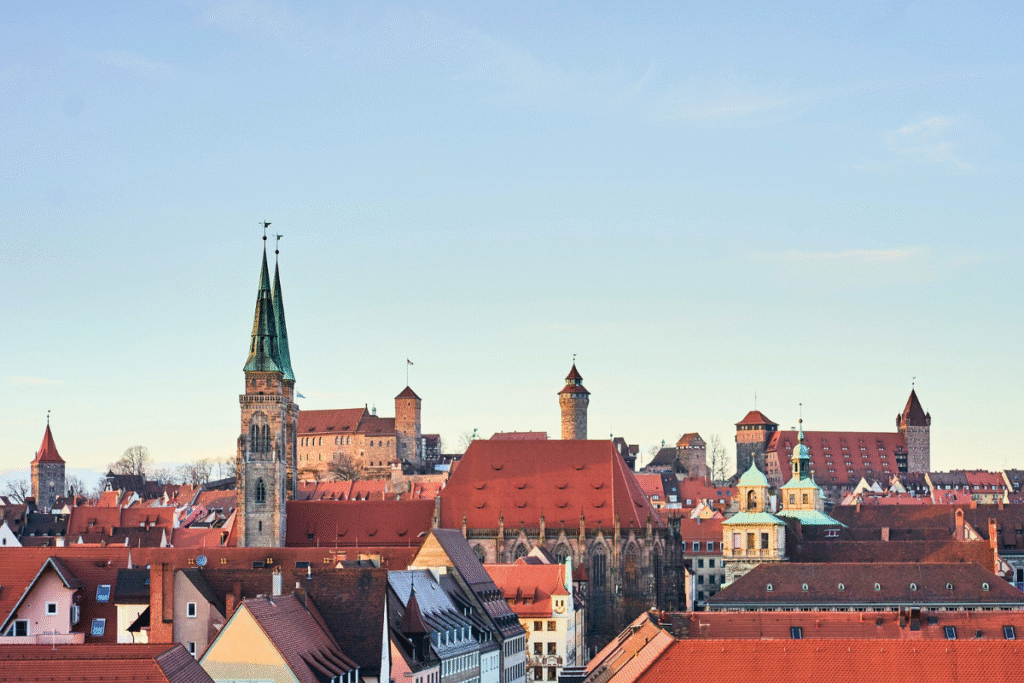
Step inside the fortress walls, and you’re stepping into what was once the heart of the Holy Roman Empire. For centuries, emperors came here to hold court, and traces of that power still linger in the vaulted ceilings, Romanesque chapel, and sturdy towers. The museum is compact but rich with detail—armor, relics, and models that help you picture what life might have looked like behind these thick stone walls.
🎫 Tip: Consider the combo ticket that includes the Deep Well and the Sinwell Tower—the views from the top are some of the best you’ll get all trip, especially if the skies are clear.
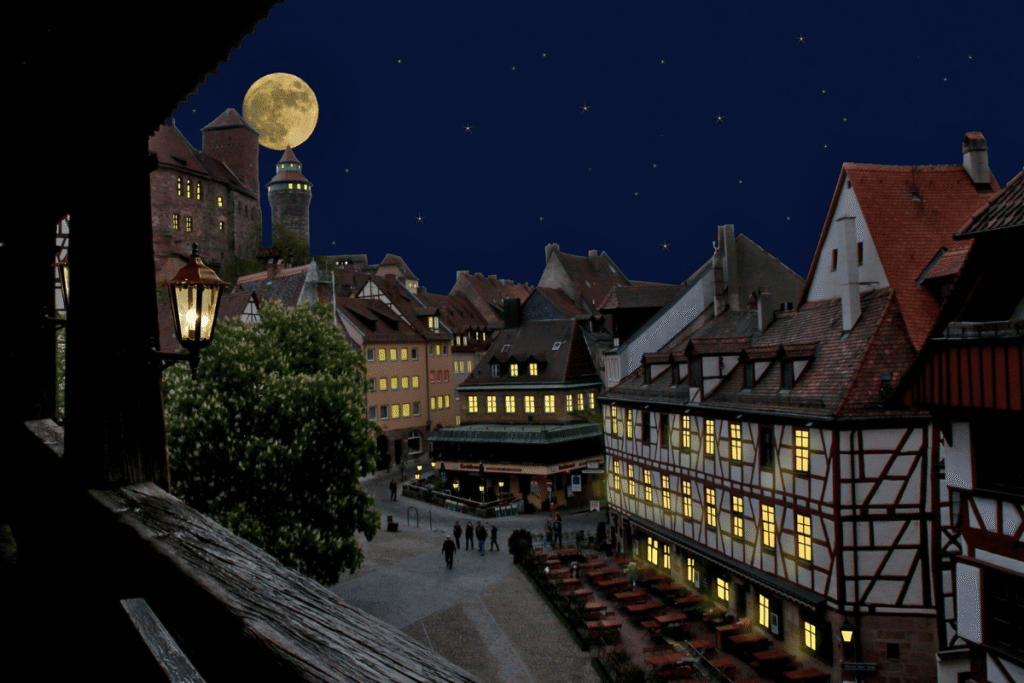
After the castle, descend into the Altstadt, Nuremberg’s old town, where half-timbered houses lean slightly over cobblestone streets and the main market square buzzes with local energy. This is where you’ll want to slow your pace—grab a seat at a café, try the city’s famous Nuremberg sausages (ideally grilled over beechwood), and browse the craft shops or stalls if you’re lucky enough to be here on a market day.
If you have a few hours to spare, visit the Albrecht Dürer House, once home to the Renaissance master himself. For a more sobering but essential perspective, the Documentation Center Nazi Party Rally Grounds is a short tram ride away and offers a powerful look at Nuremberg’s more recent history.
Stay the night here. After dark, the lantern-lit walk back up to the castle feels like stepping into another time. You’ll sleep better knowing that even a city with a complex past can still feel like one of the most beautiful stops on your journey.
⏳ Travel Time: ~1.5 hours from Landshut
🍽️ Tip: Sample Nürnberger Rostbratwürste with sauerkraut at one of the city’s historic taverns.
Day 7: Würzburg Residence & Fortress Marienberg – A Grand Finale
Your final day on the Castle Road winds through Würzburg, a city that trades alpine drama for baroque elegance and rolling vineyards. After days of fortresses and fantasy towers, this stop offers a different kind of majesty—less rugged, more regal.
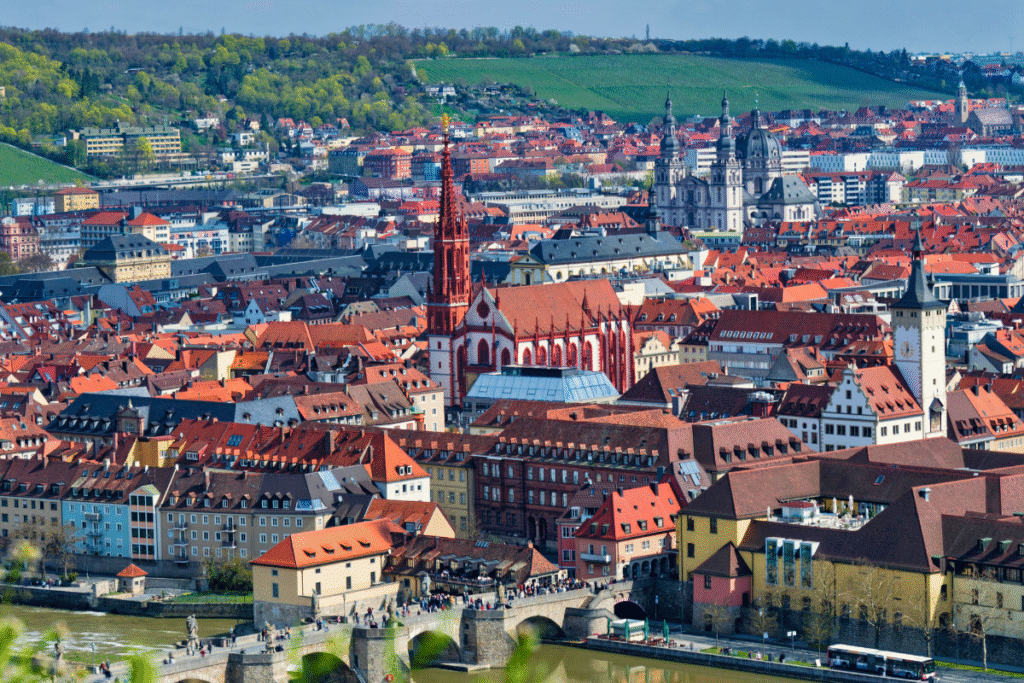
Begin at the Würzburg Residence, a UNESCO World Heritage Site and one of the most exquisite examples of 18th-century palace architecture in Europe. From the moment you step through its doors, the Residence doesn’t just impress—it overwhelms. The grand staircase feels more like a stage than a corridor, its wide arc leading upward to a jaw-dropping ceiling fresco by Tiepolo, the largest of its kind in the world. Each room that follows is a study in excess: gilded frames, ornate stucco, and ceilings so elaborately painted they seem more dreamscape than decoration. It’s the kind of place where your eyes don’t know where to land first.

🎫 Tip: You can explore the palace on your own, but the guided or audio tours give fascinating context, especially for the artwork and restoration history. Photos are restricted in most rooms—so take your time and absorb the details while you can.
Next, make your way to Fortress Marienberg, perched on a hill overlooking the city and the Main River. You can walk up from the old town in about 20 minutes or drive if you’d prefer to save your legs for the fortress grounds. This medieval stronghold predates the Residence by centuries and feels more austere—but it’s just as compelling. Originally a Celtic hill fort, then later a princely residence, the fortress has layers of history within its thick stone walls.
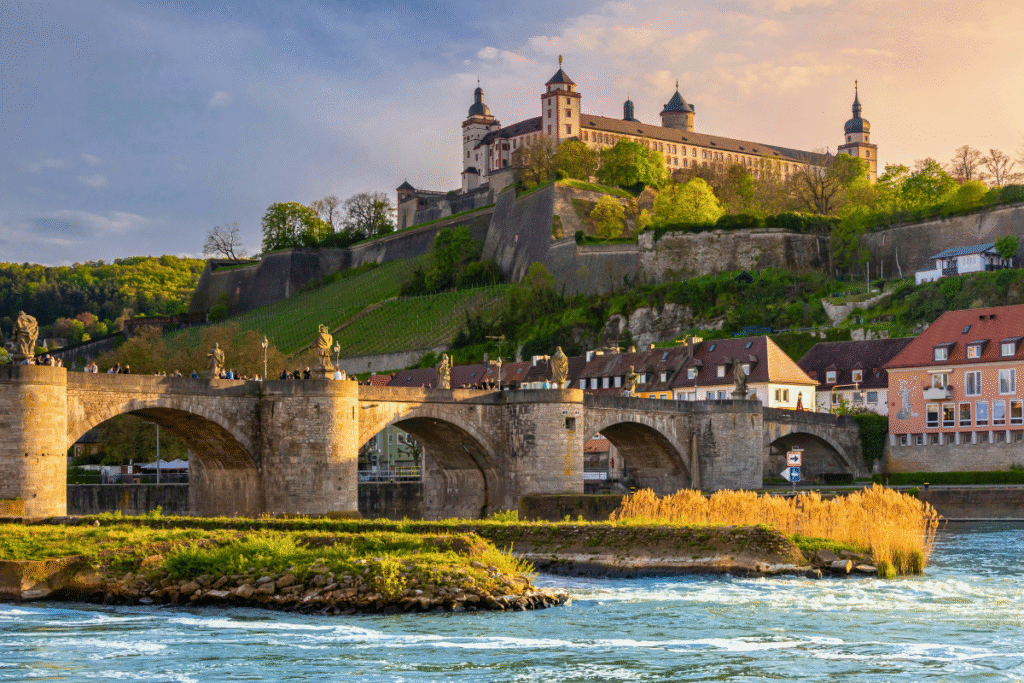
The reward for your climb? Sweeping views of Würzburg’s red rooftops, church towers, and the winding river far below. It’s a quiet place to pause and reflect on how far you’ve come, not just today—but over the past week.
As the day winds down, stroll across the Alte Mainbrücke, Würzburg’s iconic old stone bridge. Locals gather here in the early evening with glasses of Franconian wine, sharing conversation beneath the gaze of baroque statues that line the railing. It’s casual, lively, and deeply local—the perfect contrast to the palatial grandeur you started with.
If your travel plans allow, spend one last night here. Würzburg makes for a fitting farewell: rich in history, relaxed in pace, and full of understated beauty.
⏳ Travel Time: ~1.5 hours from Nuremberg
🏨 Overnight: Würzburg if extending, or return to Munich (~3 hours)
🍽️ Tip: Try local white wine and regional specialties at a wine tavern overlooking the river.

🏰 Castle History & Legends: Tales That Echo Through Time
There’s something about Bavarian castles that sticks with you long after you’ve left. It’s not just the way they look—or how they dominate the landscape—it’s what they seem to remember. Spend enough time walking their halls, and you start to hear things. Not ghosts, exactly, but echoes. Stories that haven’t quite let go.
Take Neuschwanstein. It’s easy to get caught up in the postcard view, but the real fascination starts once you know the story behind it. Ludwig II, the king who built it, wasn’t like other rulers. He preferred solitude, night rides, opera, and fantasy. He poured himself into designing a place that didn’t belong to the world outside. The result was something between a shrine and a dream. But it wasn’t finished. Not really. He lived there for just a short while before he was declared unfit to rule—and not long after, he was found dead in a lake. No witnesses, no clear explanation. Ask five locals what happened and you’ll get five different answers. No one really knows. But everyone has a theory.
Further east, Burghausen Castle offers a different kind of story. It’s not delicate. It’s vast—more than a kilometer long, built to guard the border and intimidate anyone who got too close. You can walk from one end to the other and still feel like there’s more waiting around the next turn. People talk about hidden tunnels, old escape routes, even buried chests sealed under the oldest towers. Then there’s the one about the woman in white—seen by a few night guards and one guide, they say—wandering the ramparts just after a storm rolls through. Maybe it’s a legend. Maybe not. But when you’re there, especially on a gray afternoon, it’s not hard to picture.
In Würzburg, the tales lean closer to history, but they still carry that edge. During a siege in the 17th century, defenders at Fortress Marienberg were said to have launched a single cannon shot that hit a key supply cart, turning the tide of the battle. Maybe that happened. Maybe the truth is a little messier. Still, it’s told with conviction in town, especially over a glass of wine at one of the riverside taverns.
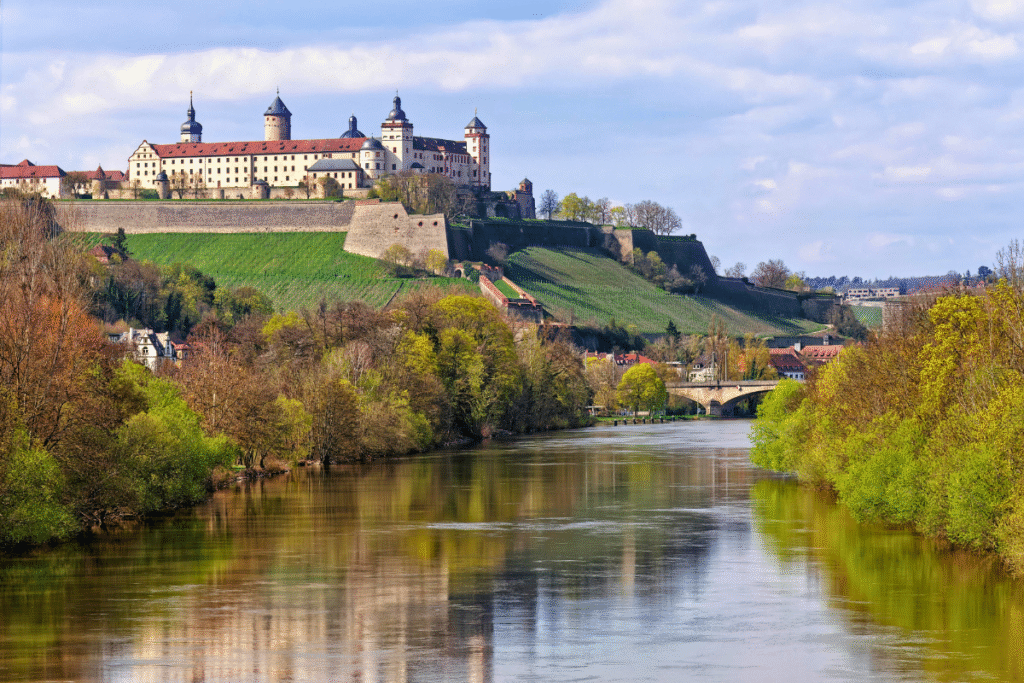
Not every castle has a headline story. Some just carry the weight of the years—little things, like worn steps in unexpected corners or a name half-scratched into the stone. In places like these, the stories come slowly. You won’t always find them in the guidebook. Sometimes, the best ones come from someone leaning in just before you leave a room and saying, “There’s something else you should know…”
That’s when it gets interesting.

🏛️ Architecture & Castle Design Insights: From Fairytale Flourishes to Fortress Might
If you think all castles look the same after a while, Bavaria will change your mind. These places weren’t stamped out of one idea—they were built by different people, for different reasons, across centuries. You start to feel that as you walk through them.
Neuschwanstein, for example, isn’t what most people expect when they hear the word “castle.” It wasn’t designed to keep out invaders. It wasn’t even finished. What you see is one man’s fantasy, stone by stone. Ludwig II poured himself into it. The towers, the view, the murals—it’s like walking into a myth he wanted to live inside. There are swans in every room, ceilings covered in stories, and no real sense of utility. But that’s the point. It wasn’t built for function. It was built to dream in.
Now head over to Burghausen, and suddenly you're in a different world. Long, low, and tough—this one means business. It stretches out along a ridge for over a kilometer, all stone and grit. It wasn’t made to impress. It was made to last. There are no painted ceilings or royal flourishes here, just defensive walls, watchtowers, and the sense that people spent a lot of time thinking about where trouble might come from.
And then there’s Linderhof, which is small, sure, but every inch of it is deliberate. Walk inside and you’re surrounded by mirrors, gold trim, and rich fabrics. Everything gleams. Everything reflects. Ludwig lived here too, mostly alone, and the whole place feels like a kind of ornate shell he built around himself. Even the gardens outside follow strict patterns—no wild hedges, no random paths. It’s carefully staged, like a private theater.
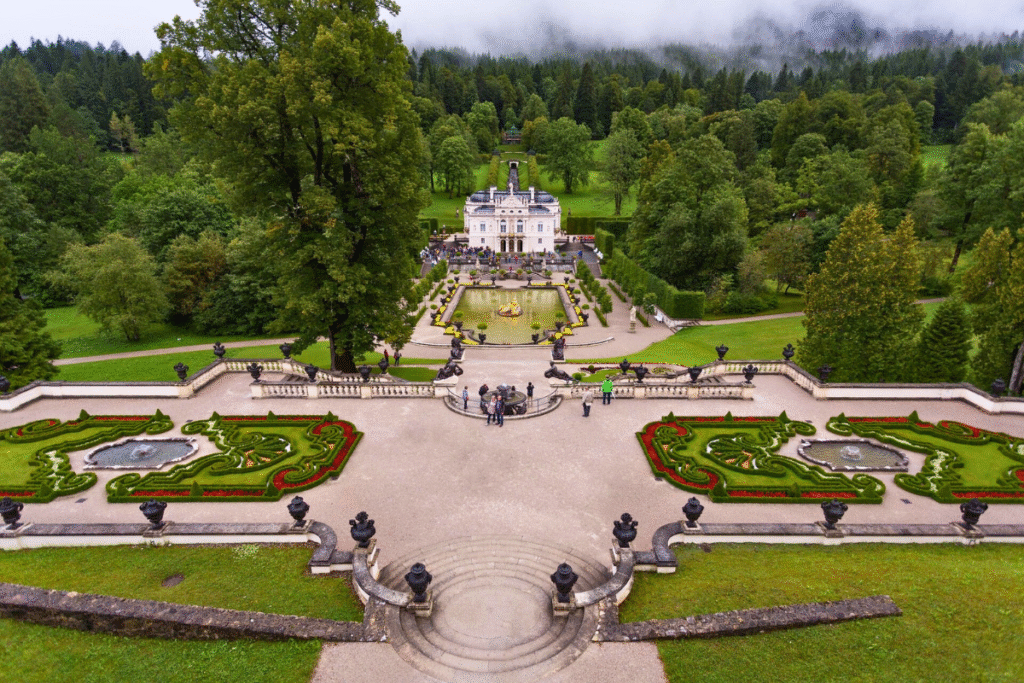
The Würzburg Residence is something else entirely. It’s big, confident, and built to show off. You walk in, and there’s that massive staircase, and above it, Tiepolo’s ceiling—a swirling, almost overwhelming scene of gods, continents, and allegory. The rooms go on and on. It’s not warm or personal. But it’s not meant to be. It was built to say: “Look what we can do.”
And then in smaller places—Trausnitz, for example, or Hohenaschau—you find odd corners, uneven floors, forgotten frescoes in stairwells. One room has beams so low you instinctively duck. Another looks out over a village that hasn’t changed much in 200 years. These aren’t palaces. They’re working castles. Lived-in. Altered. Full of charm that wasn’t planned.
By the end of the week, you stop thinking of castles as just buildings. You start seeing them as timelines—built layer by layer, shaped by politics, fashion, fear, or someone’s idea of beauty. Some whisper. Some brag. All of them tell you something, if you’re paying attention.

🧭 Travel Tips & Road Trip Advice: What to Know Before You Go
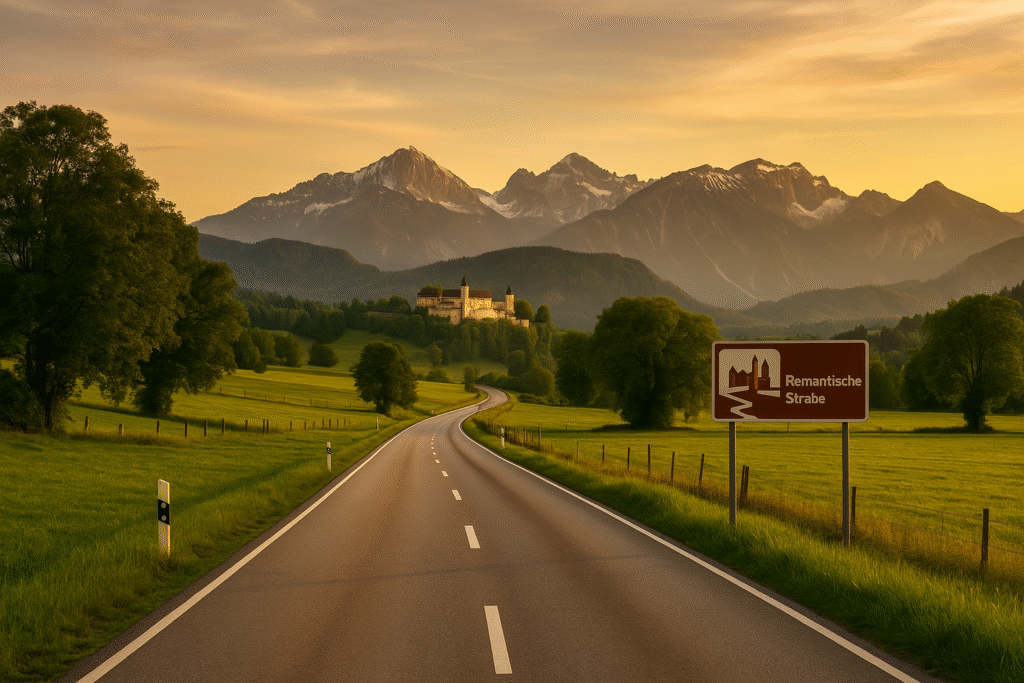
A Bavarian castle road trip isn’t difficult to plan—but a few small tips can make it smoother, cheaper, and a lot more enjoyable. Here’s what you’ll want to keep in mind before hitting the road.
Best Time to Go:
Late spring through early fall (May to October) is your sweet spot. The castles are open, the trails are clear, and the weather cooperates most of the time. July and August are beautiful—but busy. If you can swing it, aim for late September. The crowds thin out, and you might catch a few early autumn colors in the mountains.
Car or Train?
You’ll get more out of this trip with a car. Some castles are tucked away in remote corners, and public transport won’t always get you close enough without a few transfers. Roads are well-maintained, driving is easy (just mind the speed limits—they change often), and parking is usually straightforward near each castle or town. Just double-check your rental for the environmental sticker (Umweltplakette) if you’re driving into bigger cities. And download offline maps and translator apps.
Tickets & Tours:
Book Neuschwanstein and Herrenchiemsee in advance—especially if you’re traveling in summer. Many castles only offer access via guided tour, and time slots can disappear fast. For others like Burghausen or Fortress Marienberg, you can roam freely, which is a nice break from structured visits.
Entry Fees:
Each castle charges its own admission. Expect to pay between €8–€25 per castle. Some offer combined tickets or family discounts. For example, the Bavarian Palace Department’s “Königsschlösser” ticket covers Neuschwanstein, Linderhof, and Herrenchiemsee.
Driving Notes:
German drivers are efficient but fast, especially on the autobahn. Stay to the right unless you're overtaking, and don’t expect speed limits in all stretches—some truly are unlimited. That said, most of your driving will be on slower, scenic roads through hills, valleys, and farmland. Keep some coins on hand for smaller village parking lots.
Staying Overnight:
Don’t rush this itinerary. It’s tempting to see everything in a few days, but that just turns the trip into a checklist. Look for guesthouses or small inns in towns like Füssen, Burghausen, and Würzburg. Many offer great views and local character for less than the big-name hotels.
Eating Along the Way:
Gas station snacks are fine, but the real joy is finding a local tavern tucked in a side street or a bakery in a small square. Bavarian food is hearty—think schnitzel, roast pork, dumplings, and cake. And yes, you’ll find beer gardens even near castles. When in doubt, ask someone who looks like a local where they eat. They usually know best.
Other Odds and Ends:
Bring good walking shoes—you’ll be doing a lot of climbing and cobblestone wandering. Pack layers, even in summer. Some castle interiors are cool and damp, and mountain weather can shift without warning. And always check opening hours ahead of time—some places close one day a week, often Mondays or Tuesdays. Reserve restaurants ahead on weekends or in smaller towns. Also, always have cash—some rural spots don’t accept cards.
Most of all, leave room for detours. Some of the best moments on this trip won’t be in the brochure. A quiet chapel, a roadside lake, a viewpoint you almost skipped. Let the castles guide the route—but give yourself permission to explore beyond them.

🌍 Nearby Attractions & Cultural Stops: Beyond the Castle Gates
The castles may be the headline act, but the places in between? That’s where the trip really comes alive. Small towns, unexpected views, local flavors—here are a few stops that are well worth weaving into your itinerary.
Füssen’s Old Town
You’ll probably pass through Füssen after visiting Neuschwanstein, but don’t just drive on. Its cobbled alleys, painted facades, and quiet courtyards are worth at least a slow wander. Grab a coffee, browse a bookshop, or just sit in the main square and people-watch. It’s not flashy—it’s just lovely.
Oberammergau
If you’re anywhere near Ettal or Linderhof, take a short detour to Oberammergau. The town is best known for its once-a-decade Passion Play, but it’s also full of colorfully painted houses and traditional woodcarving workshops. It feels like a storybook village that people still live in—not one polished up just for tourists.
Lake Chiemsee
If you’re heading to Herrenchiemsee Palace, give yourself time to enjoy the lake itself. There are walking paths, boat rentals, and beer gardens along the shore. You can also visit Fraueninsel, the nearby island with a centuries-old convent, a few shops, and a peaceful atmosphere that’s a world away from Ludwig’s extravagance.
Landshut’s Altstadt
It’s easy to overlook Landshut, but it might be one of the most charming towns on your route. The old town has serious personality—colorful buildings, towering churches, and plenty of spots for lunch or a quick beer. If your timing is right, the Landshut Wedding (a giant historical reenactment held every four years) is a full-on medieval spectacle.
Albrecht Dürer’s House in Nuremberg
Art lovers shouldn’t miss this timber-framed gem in Nuremberg’s old town. The preserved home of the Renaissance master includes his workshop, personal artifacts, and interactive exhibits.
Bamberg or Regensburg
Either makes a great extension if you’ve got time at the end of your trip. Both towns are UNESCO-listed, walkable, and packed with character. Bamberg leans romantic with its winding riverfront, while Regensburg is full of Roman ruins and vibrant squares. Bonus: excellent beer in both.
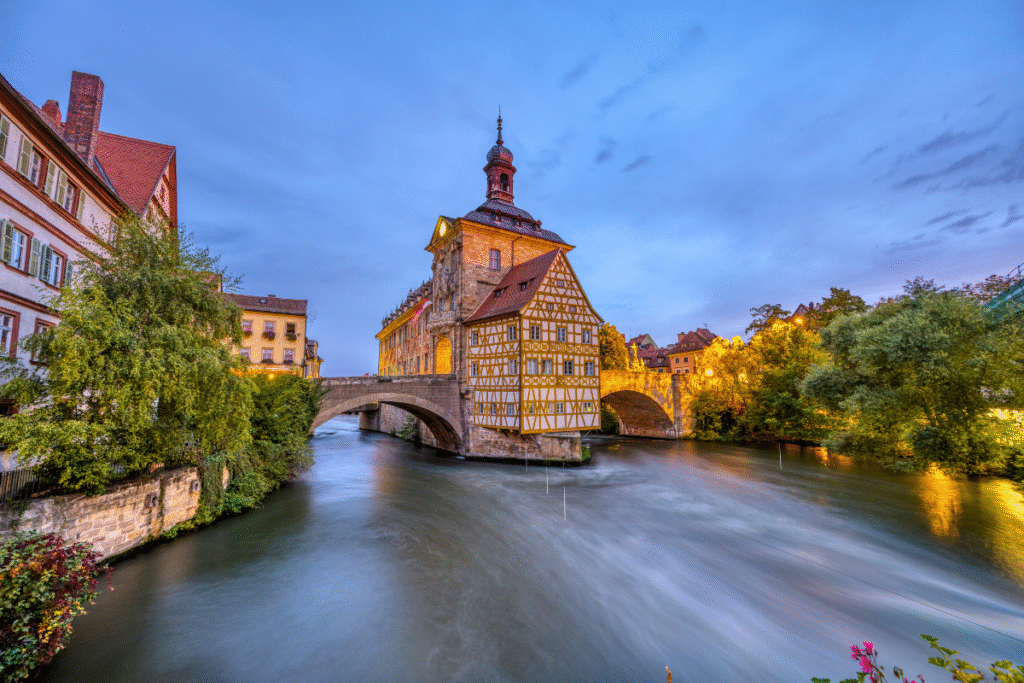
Bavarian Village Markets
Wherever you go, check if a local market is happening. From Füssen to Nuremberg, many towns host weekly markets selling everything from handmade crafts to fresh pretzels. It’s a great way to connect with the culture—and pick up some unique souvenirs.
Franconian Wine Country
If you’re ending in Würzburg, don’t rush off. The surrounding wine region is full of gentle hills, family-run wineries, and villages that still ring church bells every hour. In good weather, locals gather on the Alte Mainbrücke to sip white wine by the glass while the sun drops behind the fortress. Join them.

🔴 Final Thoughts: One Road, Countless Memories
You don’t always realize what kind of trip you’re on until it’s almost over. Driving through Bavaria, castle to castle, it creeps up on you—how much ground you’ve covered, how many eras you’ve passed through. One minute you're staring up at a stone fortress built for war, and the next you're standing in a gold-drenched palace designed for one man's solitude. And somewhere in between, you start to slow down and look a little closer.
This road trip isn’t just about sightseeing. It’s about the in-between moments. A quiet coffee in a market square. A wrong turn that leads to a better view. The way fog rolls over a turret at just the right time. That feeling when history isn’t something you read about, but something you walk through.
You don’t need to follow the exact route. Change it up. Take detours. Stay longer in the places that speak to you. That’s the real magic of this kind of journey—it gives you space to make it your own.
💬 If you’ve already done a trip like this—or plan to—we’d love to hear what you discovered. Share your favorite moments in the comments, or tag us on Instagram @CastleQuestChronicles so we can follow along.
👉 And if you’re still hungry for more castles, take a look at these next:
- 10 Best Castles to Visit in Scotland: A Complete Travel Guide
- 25 Best Castles to Visit in Europe: Iconic & Hidden Gems
- The 25 Most Famous Castles in the World: Iconic Fortresses You Must See
There's always another story waiting.
📸 And if this article sparked your curiosity about the castles, follow along. We are on Instagram, Pinterest, Facebook, and X, too. More castles (and more stories) are just around the bend. Explore all our castle adventures here!

